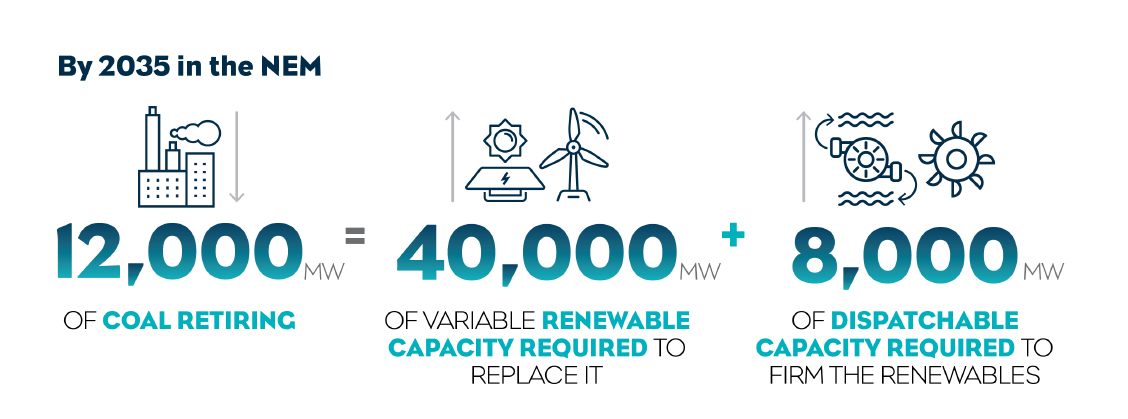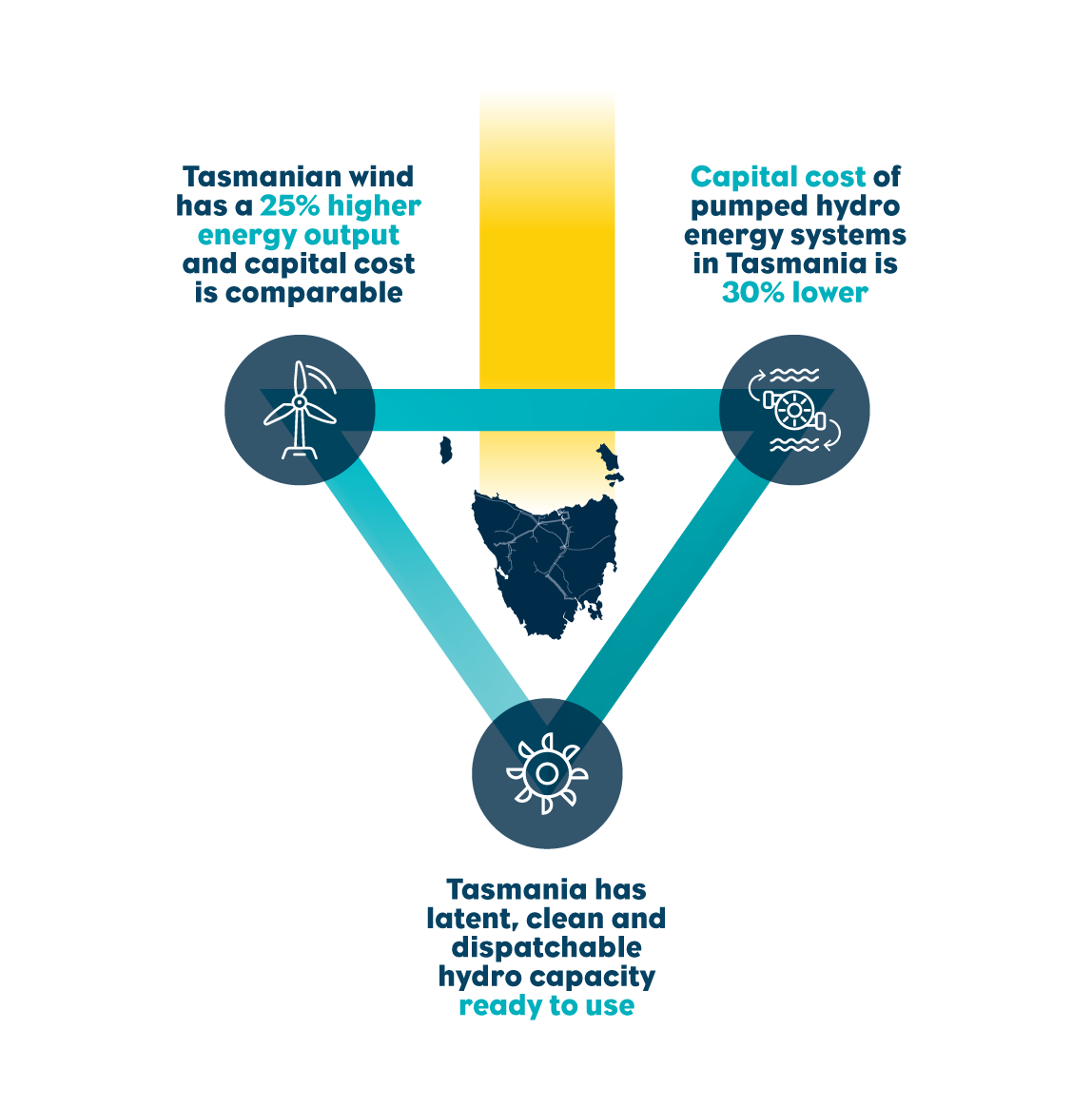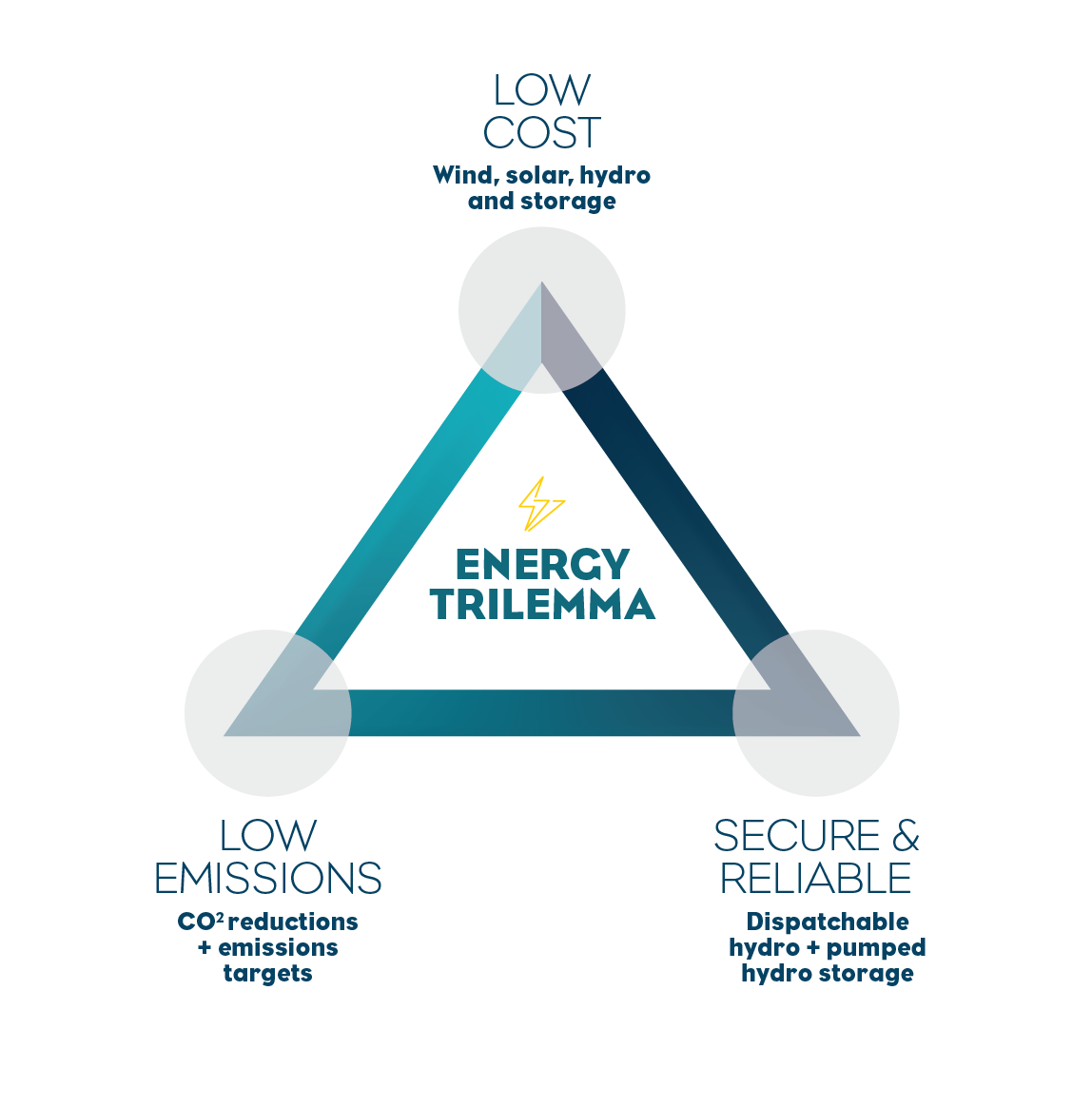The National Electricity Market (NEM) is experiencing unprecedented change as ageing baseload fossil-fuel generators continue to retire. Increasingly energy is supplied by low cost, but variable, renewable wind and solar generation, that needs to be backed by dispatchable and flexible ‘on-demand’ firming capacity to fill the supply gaps when the sun isn’t shining and the wind isn’t blowing. Increased energy efficiency, together with large and small scale batteries, are also expected to play an increasing role in Australia’s future energy market.
By 2035, at least 12,000 MW of coal generation is expected to reach its end-of-life and retire. Modelling shows that to replace it, the NEM will need at least 40,000 MW of variable renewables, such as wind and solar generation, and 8,000 MW of ‘firming’ dispatchable generation and storage (in addition to the 2,000 MW coming from Snowy 2.0), such as hydroelectric and gas generation, to meet customer requirements.

The Regulatory Investment Test for Transmission (RIT-T) is a cost benefit analysis overseen by the Australian Energy Regulator (AER). It assesses the economic and technical impact of, and preferred timing for, all major network investments in the national energy market (NEM). The RIT-T process.
ensures regulated transmission investment decisions are in the long term interests of customers.
TasNetworks published its Project Assessment Draft Report (PADR) as part of the RIT-T process in December 2019. The PADR follows on from the Project Specification Draft Report (PSCR) released in July 2018, which described the identified need for Marinus Link.
TasNetworks’ PADR analysis concludes that that Marinus Link and supporting transmission provide substantially greater benefits than costs under all TasNetworks scenarios modelled. The PADR analysis shows that the optimal interconnection capacity is 1500 MW, built in two separate 750 MW links. The optimal timing for the two stages is 2028 and 2032.

The first 750 MW of Marinus Link provides the opportunity to access available and repurposed hydro capacity in the existing Tasmanian hydro system. The prospect of utilising existing Tasmanian hydro capacity allows the NEM to defer the need for investment in more expensive and higher risk new generation alternatives like pumped hydro and gas powered generators.
The first stage of Marinus Link also accompanies up to 900 MW of additional wind development in Tasmania, depending upon the RIT-T scenario. The second 750 MW of Marinus Link sees further wind development and complements the development of cost effective and long duration pumped hydro energy storage (PHES) in Tasmania.
In addition to low emission dispatchable hydro and pumped hydro energy, Tasmania has some of the best land-based wind resources in the country. This results in higher capacity factors (ie higher average energy output), which means that the cost of generating a unit of energy could be up to 25% lower in Tasmania as compared to elsewhere in Australia. Marinus Link unlocks this wind generation potential and enables delivery of higher value generation to the broader National Electricity Market. A 1500 MW Marinus Link unlocks the potential for up to 3,000 MW of additional wind development in Tasmania.
In summary, Marinus Link assists in unlocking high value Tasmanian renewable energy resources, assisting to address the energy trilemma: delivering low-cost, reliable and clean energy to customers around Australia.

The Marinus RIT-T PADR Industry Forums were held in three locations; Hobart, Melbourne and Sydney. These locations were chosen to reach many key industry stakeholders in the NEM regions, including in Victoria and New South Wales, where customers are expected to see significant energy market benefits from Marinus Link. Attendance was encouraging with close to 150 highly engaged attendees across the three forums.
Andrew Turley, Manager Integrated Energy Systems at AEMO attended each forum to provide an update on the Integrated System Plan (ISP). Andrew highlighted that the draft ISP released in late 2019 proposed progress of a ‘shovel ready’ Marinus Link project, so that the link can be in service when the NEM needs it.
Some of the questions asked by attendees were:
- How will the 2020 ISP, due for release in mid-2020 be taken into account in the RIT-T analysis?
- What are the trigger events that could see Marinus timing come forward?
- How does the recent Tasmanian Renewable Energy Target (TRET) of 200% renewables by 2040, affect the need for Marinus?
- Who will pay for Marinus Link? Who will own and or invest in it? Which customers will pay for its services?
- Is there sufficient existing and new generation capacity planned in Tasmania to fully utilise the proposed 1500 MW increase in interconnection, above and beyond the existing 500 MW Basslink interconnector currently provides?
- What are the advantages of staging the link’s development? What does developing a 1500 MW Marinus link in stages mean in terms of the type of generation that is unlocked?
In the interests of increased modelling transparency and ‘crowdsourcing’ of modelling insights, TasNetworks made hourly modelling outcomes for the Marinus Link RIT-T options available upon request. The hourly data package details generation by each technology type on a regional basis, together with interconnector flows and forecast demand. For those who are interested in accessing this data, please contact us at team@marinuslink.com.au.
TasNetworks has received submissions on the PADR as part of the RIT-T consultation process. Non-confidential submissions will be loaded on the TasNetworks website. All submissions will be taken into account as TasNetworks continues the RIT-T analysis.
TasNetworks proposes to undertake further modelling once the Final 2020 ISP has been released, and before finalising the RIT-T assessment. This further modelling will also be provided for consultation, and is discussed further below.
AEMO’s draft ISP, which considers future transmission investment needs for the NEM, included a range of scenarios and possible in-service dates for Marinus Link and other interconnectors. TasNetworks’ RIT-T PADR analysis was based on earlier assumptions published by AEMO, and some different modelling considerations, and these lead to some differences in modelling outcomes between the PADR and the draft ISP. TasNetworks continues to work with AEMO as it finalises the Final 2020 ISP.
As shared with stakeholders at the Marinus Link PADR industry forums, TasNetworks is planning to publish a supplementary market modelling report after the Final 2020 ISP is released. The modelling in this report will aim to incorporate final set of inputs and assumptions used in the Final 2020 ISP.
This supplementary report will also consider impacts of the recently announced Tasmanian Renewable Energy Target (TRET), doubling Tasmanian renewable generation by 2040.